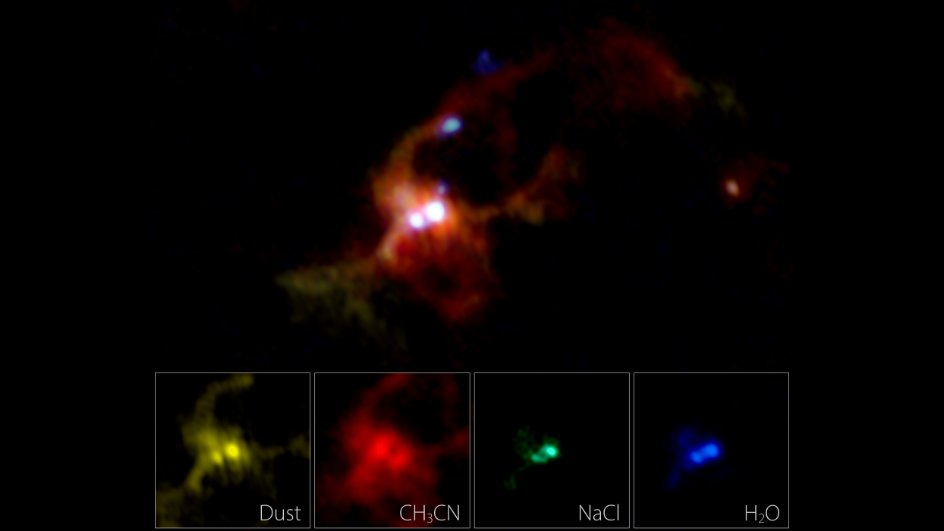Discover and read the best of Twitter Threads about #astronomers
Most recents (8)
#Thread #Astronomy #Stars #UPDATE
An international team of scientists led by #Indian #astronomers has spotted a new member belonging to the extremely rare group of young stars that exhibit what's called episodic accretion. 1/n
An international team of scientists led by #Indian #astronomers has spotted a new member belonging to the extremely rare group of young stars that exhibit what's called episodic accretion. 1/n

Episodic accretion is a process where stars accrete via a disk from a more spherically distributed envelope which adds mass to the disk & makes it unstable on an irregular basis. Such instability dumps extra material onto the star & accretion rate & luminosity increase. 2/n
Indian astronomers from the @ARIESNainital as part of an international team, including from @TIFRScience and @IIABengaluru have discovered “Gaia 20eae”, the latest member of episodically accreting young stars, according to @IndiaDST . 3/n
New #Milkyway Map Show #Earth 2,000 Light Years Closer to Massive #BlackHole Than Previously Thought
weather.com/en-IN/india/sp…
By- @MrigDixit
(📸: NASA/JPL-Caltech/R. Hurt (SSC/Caltech))
weather.com/en-IN/india/sp…
By- @MrigDixit
(📸: NASA/JPL-Caltech/R. Hurt (SSC/Caltech))

A new cosmic map has suggested that the #Earth is spiralling 2,000 light-years closer to the #BlackHole located at the centre of our #MilkyWay galaxy.Dont worry,our planet is not plunging into the black hole soon as it is still thousands of light-years away from the black hole.
The new map constructed by the #astronomers from the National Astronomical Observatory of Japan (NAOJ) is developed using data collected over the past 15 years. It places #Earth just 25,800 light-years away from the centre of the galaxy where the #BlackHole resides.
#SaltyStars | Astronomers Discover Pair of Massive Stars Wrapped in Salt and #WaterVapour Clouds
weather.com/en-IN/india/sp…
(📸: ALMA (ESO/NAOJ/NRAO), Tanaka et al.)
By @kun5k
weather.com/en-IN/india/sp…
(📸: ALMA (ESO/NAOJ/NRAO), Tanaka et al.)
By @kun5k

A group of #astronomers has, only for the second time ever, discovered a pair of massive baby stars that are growing in what appears to be salty cosmic soup.
Each star seems to be engulfed in a gaseous disk that possesses molecules of heated water vapour and sodium chloride, commonly known as table salt.
#Astronomers Discover First Look-Alike of Our #MilkyWay Galaxy in Early Universe
weather.com/en-IN/india/sp…
(📸: ESA/Hubble/NASA, A. Riess et al)
By @MrigDixit
weather.com/en-IN/india/sp…
(📸: ESA/Hubble/NASA, A. Riess et al)
By @MrigDixit

Astronomers have spotted a look-alike galaxy our Milky Way with a close resemblance.
The newly found galaxy named SPT0418-47 is estimated to be located about 12 billion light-years from our galaxy, it is so far that its light takes nearly 12 billion years to travel & reach us.
The newly found galaxy named SPT0418-47 is estimated to be located about 12 billion light-years from our galaxy, it is so far that its light takes nearly 12 billion years to travel & reach us.
The newly discovered galaxy was formed when the universe was just 10% of its current age—about 1.4 billion years old.
A galaxy comprises gas, dust & billions of stars—held together by gravity. Milky Way galaxy that holds the entire solar system—is about 13.51 billion years old.
A galaxy comprises gas, dust & billions of stars—held together by gravity. Milky Way galaxy that holds the entire solar system—is about 13.51 billion years old.
Sharing knowledge in the spirit of #Humboldt: papers from last year's symposium @Macquarie_Uni now available in special issue open-access, Journal of Royal Society of NSW about challenges of #research #Communication @AvHStiftung
royalsoc.org.au/council-member…
royalsoc.org.au/council-member…

Ingrid Piller @MQLinguistics reflects on #Humboldt’s legacy as a #research communicator and identifies
contemporary #challenges of research #communication, #dissemination, and #impact
royalsoc.org.au/images/pdf/jou…
contemporary #challenges of research #communication, #dissemination, and #impact
royalsoc.org.au/images/pdf/jou…
Gabrielle McMullen explores #Humboldt's
achievements and impact as explorer, scientist and author, on the occasion of his 250th birthday
royalsoc.org.au/images/pdf/jou…
achievements and impact as explorer, scientist and author, on the occasion of his 250th birthday
royalsoc.org.au/images/pdf/jou…
On 3 May 1374 BCE a solar eclipse was observed and recorded at Ugarit by Mesopotamian astronomers. "On the day of the new moon, in the month of Hiyar, the Sun was put to shame, and went down in the daytime, with Mars in attendance." Humour me - unpack that staggering assertion.
We know for a fact that a solar eclipse took place on this day 3,394 years ago. How? Because #science can verify #history and its records, when the records survive.
Some sources list this eclipse as occurring in 1375 but NASA's catalogue of solar eclipses clearly states 1374. (1375CE had eclipses in June and November.) Check out the catalogue and look back into the history of #astronomy. It's beautiful.
Scientists spot water vapor at a potentially habitable planet.
For the first time, #astronomers looking beyond our solar system have spotted water vapor in the atmosphere of a planet where temperatures might also be just right for life.
Exoplanet K2-18b is a super-Earth thats twice the size of our planet, with eight times the mass. Its also wet, or at least the skies around it are.
1/n Did you know that early #career researchers based in #Europe are trying to gather together (EPEC) under the cover of @europlanetmedia and work together on several different topics? On of them is #outreach of space science... 

2/n Outreach plays a very important role in the scientific community. By spreading scientific news to the public, we can both inspire them and also engage different audiences with planetary sciences. However, to be good in outreach is not really easy... 

3/n Therefore me and @AnastasiaKokori started a project named "Inspiring story of the month" in which we would like to share with you one story every month in which you can learn what our colleges - early career researchers - done across the Europe to promote their work/science 

